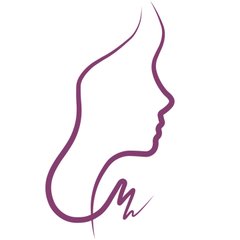
In recent years, Botulinum toxin or Botox treatments have surged in popularity, evolving from a niche procedure to a mainstream beauty trend embraced by a diverse demographic.
This blog post explores the trends in Botox treatment, the factors driving its boom, current on-label and off-label uses, and what the future might hold for this cosmetic treatment.
Botox, a purified form of botulinum toxin, was initially approved by the FDA for medical use in the late 1980s, primarily for treating conditions like chronic migraines and excessive sweating. However, the cosmetic application reducing wrinkles and fine lines has catapulted Botox into the limelight.
- Increased Awareness and Acceptance: Once a luxury for the rich and famous, Botox is now more accessible and socially accepted, thanks to media coverage, celebrity endorsements, and social media influence. - Preventive Treatments: More people in their 20s and 30s are using Botox to prevent wrinkles, expanding its market. - Minimally Invasive with Quick Results: Botox offers a non-surgical, quick option with minimal downtime, perfect for busy individuals seeking immediate improvements. - Affordability: While still an investment, Botox has become more affordable with competitive pricing and financing options. - Minimalist Procedures: There’s a trend towards natural and subtle enhancements, with smaller doses and fewer sessions for a more natural look. - New Formulations and Delivery Methods: Advances are making Botox treatments more precise and effective, with longer-lasting effects and reduced treatment frequency. - Combination Therapies: Combining Botox with other non-invasive procedures like fillers, laser treatments, and microneedling is becoming popular for comprehensive facial rejuvenation. - Therapeutic Uses: Beyond cosmetics, Botox treats various medical conditions such as excessive sweating, TMJD, chronic migraines, neuropathic pain, and even depression. Research continues to explore further uses.
Botox has become more popular and diverse in its applications over the years. Here’s a look at some key statistics and trends based on recent data taken from the International Society of Aesthetic Plastic Surgery (ISAPS), American Society of Plastic Surgeons, and Statista: Global and Regional Statistics - Global Procedures: In 2022, a staggering 9,221,419 Botox procedures were performed worldwide, marking a 26.1% increase from the previous year. - Top Countries: The United States led the way with 3,945,282 procedures, making up 42.8% of the global total. Other leading countries included Japan (841,620), Brazil (433,263), and Mexico (345,939). Demographics - Age Groups: The most common age group for Botox treatments in 2022 was 35-50 years old, with nearly half of the total procedures performed on this demographic. The average age for Botox patients was 43 years old. 18-34 Years Old: This younger demographic had 2.213 million procedures in 2022, showing a trend toward preventative use of Botox. - Gender: Women accounted for 85.1% of Botox procedures in 2022, with nearly 7.9 million women opting for the treatment compared to 1.370 million men.
Botox is experiencing a significant rise in popularity, with the global botulinum toxin market expected to hit $15.4 billion by 2030. In 2021 alone, nearly 3.6 million people received cosmetic injections, marking a post-pandemic boom. CivicScience data shows Gen Z leads in experience with non-invasive cosmetic procedures, while Millennials show the highest intention to try them. Overall, 8% of U.S. adults have tried such treatments, and 7% plan to. Women are more likely than men to try these procedures. The average Botox treatment costs between $300-$600, and over half of users spend more than $1,000 annually on these treatments. Social media heavily influences interest, with weekly TikTok users showing the highest interest in cosmetic procedures. Despite economic challenges, demand for Botox appears resilient, with users and potential users less concerned about inflation and more likely to feel financially secure post-pandemic. Additionally, 60% of those who have tried non-invasive treatments feel more attractive than their peers, although concerns about the risks of Botox have increased. The cosmetic treatment industry continues to grow, with no signs of slowing down.
Botox usage continues to grow globally, with significant increases in both cosmetic and medical applications. The treatment is most popular among women aged 35-50, but younger people are increasingly using it preventatively. This trend reflects a broader acceptance and integration of Botox into both aesthetic and therapeutic practices.


